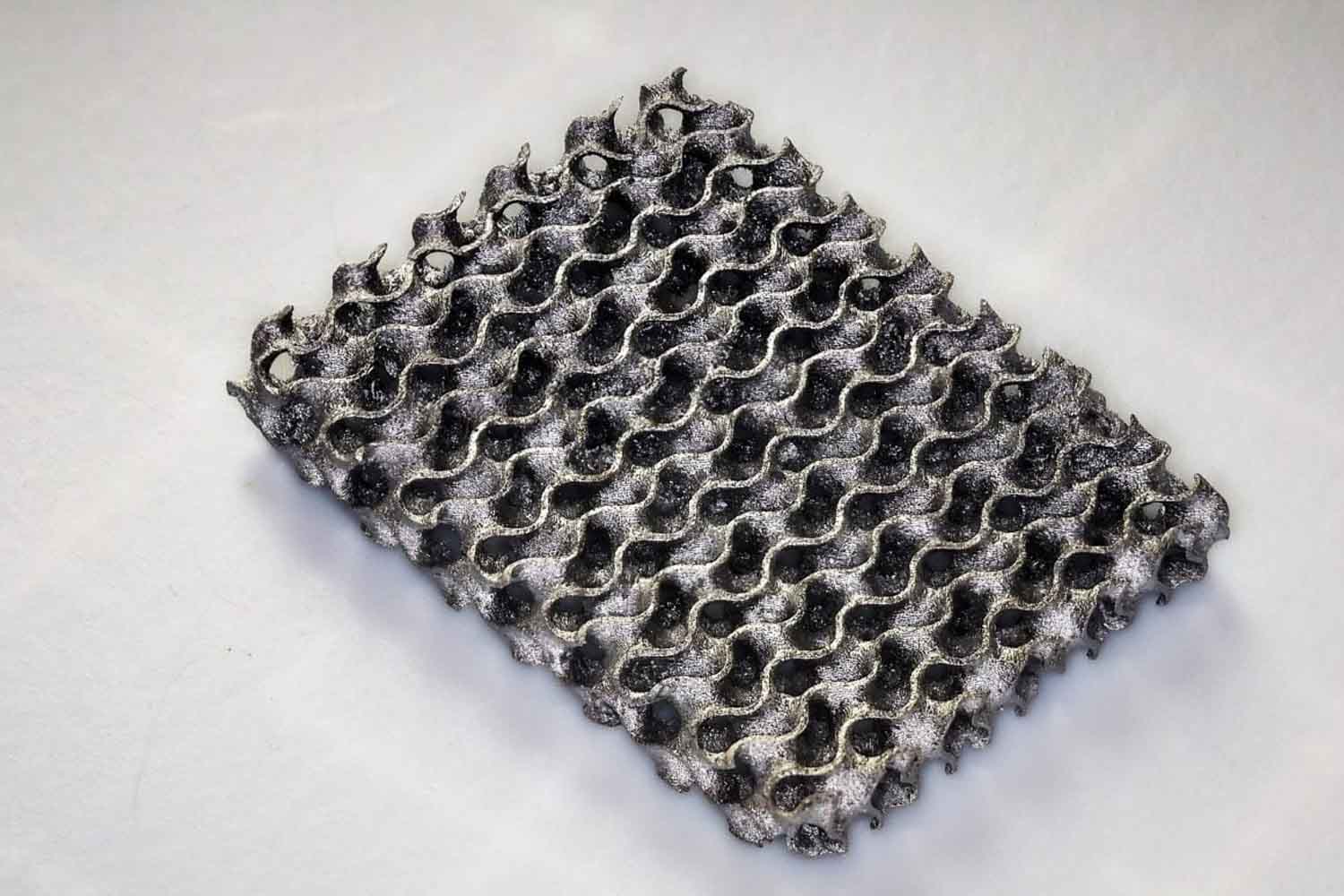It no longer starts from metal, but from a hydrogel: the final material is chosen after printing, opening new possibilities for resistant and complex objects

Many 3D printers work through a system called photopolymerization, where a liquid resin solidifies thanks to UV light or lasers. The problem? It only works with light-sensitive polymers, so no metals or ceramics.
Some alternative methods try to transform a printed polymer into a more solid material. But often the result is not very compact and full of holes, with objects that shrink and deform too much.
The team led by Professor Daryl Yee, who heads the ALCHEMY laboratory at EPFL, chose a completely different approach. It starts with a simple, transparent hydrogel, 3D printed in the desired shape. Then it’s immersed in a solution containing metal salts. These salts enter the gel and transform into tiny metal particles.
The step is repeated multiple times, in cycles called “growth cycles”, to increase the amount of metal. In the end, with heat, the gel evaporates and only the metal or ceramic remains, with the perfect shape of the original model, as Yee emphasizes:
Instead of printing with metal already, we print the shape first, and choose the material later. This makes the technique much more flexible and accessible.
Tests on complex shapes: up to 20 times more resistant with less deformation
To test the effectiveness of their method, the researchers printed gyroids, complex geometric structures also found in nature. They created them using different metals like copper, iron, and silver. Then they subjected them to mechanical resistance tests.
As Yiming Ji, doctoral student and first author of the study, explains, the results speak clearly:
Our structures withstood pressures 20 times higher compared to similar materials obtained with other techniques.
And they shrank only by 20%, against an average ranging from 60 to 90%.
This means that the pieces obtained are not only more resistant, but also more stable and precise.
Practical applications
The potential of this discovery is concrete, not theoretical. The new technique is ideal for producing 3D objects that need to be resistant, lightweight, and with complex shapes. And this is exactly what’s needed in many key sectors:
- Biomedical devices, such as personalized implants or microstructures for tissue regeneration;
- Energy technologies, such as metal catalysts used to convert chemical energy into electricity;
- Cooling systems, to increase the efficiency of electronic components or batteries.
The next steps? The EPFL team is working to speed up the process, which today requires several immersion cycles. For this, they’re developing an automatic robot that could manage the slower phases, thus opening the way to industrial-scale production.
Our goal is to make this technique fast and economical, to get it out of the laboratories and into companies.
Source: Advanced Materials
